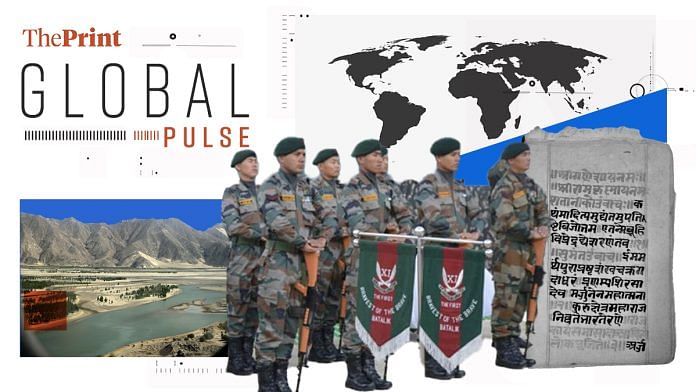New Delhi: A change in the hiring rules of the Indian Army has had direct implications for young men in Nepal, reports Al Jazeera.
Nepal’s government suspended the Gurkha recruitment pipeline in 2022 after the introduction of the Agnipath scheme in India. Under the new scheme, recruits get a fixed four-year tenure, beyond which only about a quarter are hired for regular service.
Without the option of joining the Indian Army, many young men are now unemployed and are being pushed to “try more dangerous alternatives — like joining the Russian army, with the hopes of earning more money”, according to the Al Jazeera report, ‘Why Nepal’s Gurkha fighters want to join India’s army again’.
Gurkhas, famous for being among the world’s most fierce fighters, have over the years continued to be a part of the Indian Army and have fought major battles like the Kargil War in 1999, report Rojita Adhikari and Priyanka Shankar.
“I find India’s new army recruitment scheme discriminatory today. It is unfair and what will a young Gurkha do after four years of training?” Jaya Prakash Gurung, a former British Army Gurkha and managing director of the British Gurkha Training Centre tells Al Jazeera. “We have been a part of the Indian Army for decades and the government of Nepal and India should discuss a solution to resume recruitment, keeping the future of our young boys in mind.”
Condolences continue to pour days after the death of Manmohan Singh, who passed away at 92. The Guardian calls him “a transformative figure in Indian history”.
In its obituary, The Guardian notes his role in shaping modern India through economic reforms as finance minister in the 1990s—steering the country out of a financial crisis and opening it to global markets. As the Prime Minister between 2004-2014, he strengthened ties with the US, “ended India’s nuclear isolation”, and introduced pivotal social policies.
“In all this, he was bolstered by his reputation for absolute honesty, a considerable asset in the world of Indian politics,” Mark Tully and Randeep Ramesh for The Guardian.
Born in Gah, now a part of Pakistan, Singh overcame Partition’s trials to excel academically, earning accolades from Cambridge and Oxford. Despite the influence of Sonia Gandhi, as the leader of Congress, Singh, during his tenure, showed resolve, especially in securing a contentious US nuclear deal.
In the later part of his life, reflecting on Prime Minister Narendra Modi’s policies, Singh called demonetisation “organised loot” and lamented rising societal divides under Modi’s leadership. The obituary says that he was appalled by Modi’s rhetoric.
In the BBC, India correspondent Soutik Biswas writes about ‘How India’s food shortage filled American libraries.’
The United States’ PL-480 or Food for Peace programme, initiated during the Cold War, forged an unexpected legacy. It led to the enriching of libraries at American universities with South Asian works.
“PL-480 has had amazing and unexpected consequences for the University of Chicago and for more than 30 other US collections,” James Nye, director of the Digital South Asia Library, tells the BBC.
Under the programme, launched in 1959, countries bought grain from the US with local currencies. “India was one of the largest recipients of this food aid, particularly during the 1950s and 1960s when it faced severe food shortages,” reports Biswas.
Participating US universities, which procured Indian among other currencies at “minimal cost”, were then able “to purchase local books, periodicals, phonograph records, and ‘other media’ in multiple Indian languages”, Biswas adds.
A Delhi-based team of 60 meticulously sourced books and periodicals, building a treasure trove of over 750,000 items by 1966. These materials, after reaching the US, filled knowledge gaps in the West but sparked debates about draining resources from the subcontinent.
Scholars like Todd Michelson-Ambelang told the BBC that the programme created “knowledge gaps” in South Asia, with researchers often needing to travel to the West to “access these resources”
The South China Morning Post article ‘What will China’s new mega dam mean for India ties and fragile Tibetan ecosystem?’ says the approval of the project on the Yarlung Tsangpo River has sparked alarm over its environmental and geopolitical impact.
Set to dwarf the Three Gorges Dam, the project will harness the Tibetan Plateau’s hydropower potential but risks escalating tensions with India, where the river becomes the Brahmaputra, reports Shi Jiangtao.
Experts warn of seismic dangers and ecological damage in the fragile “Grand Canyon” region on the lower reaches of the Yarlung Tsangpo.
The dam intensifies a broader race for control over water and territory, with both nations deploying infrastructure to solidify claims.
(Edited by Sanya Mathur)






